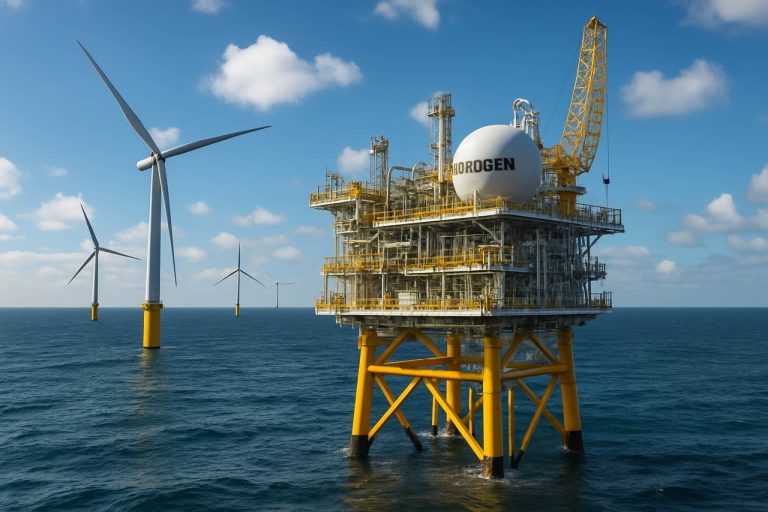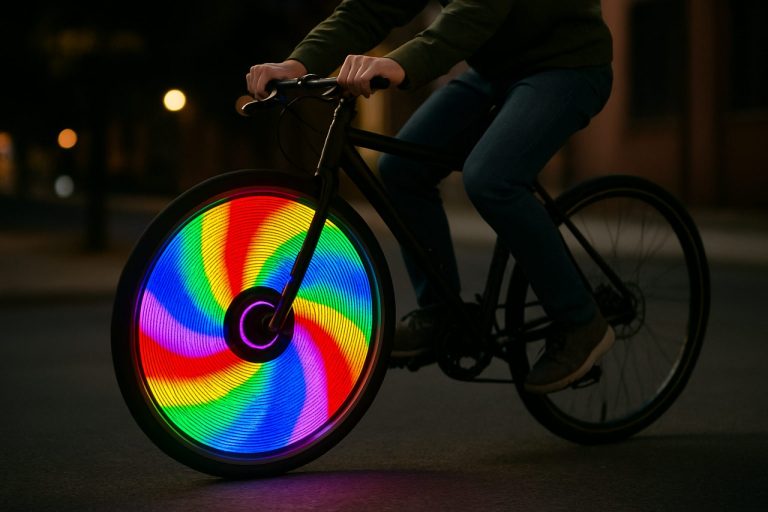
Unlock Urban Sustainability with Green Roof Retrofitting. Discover How Modern Roof Upgrades Can Revolutionize Energy Efficiency, Stormwater Management, and Urban Biodiversity.
- Introduction to Green Roof Retrofitting
- Environmental and Economic Benefits
- Key Considerations Before Retrofitting
- Types of Green Roof Systems for Retrofits
- Step-by-Step Retrofitting Process
- Structural and Engineering Requirements
- Cost Analysis and Funding Opportunities
- Case Studies: Successful Green Roof Retrofits
- Common Challenges and Solutions
- Maintenance and Long-Term Performance
- Future Trends in Green Roof Retrofitting
- Sources & References
Introduction to Green Roof Retrofitting
Green roof retrofitting refers to the process of installing vegetated roofing systems on existing buildings, transforming conventional rooftops into living, functional landscapes. This practice is gaining momentum as cities seek sustainable solutions to urban challenges such as heat island effects, stormwater management, and biodiversity loss. Unlike new construction, retrofitting presents unique technical and logistical considerations, including structural load assessments, waterproofing upgrades, and integration with existing building systems.
The benefits of green roof retrofitting are multifaceted. Green roofs can significantly reduce rooftop temperatures, lower building energy consumption, and extend the lifespan of roofing materials by protecting them from ultraviolet radiation and temperature fluctuations. Additionally, they play a crucial role in urban stormwater management by absorbing and delaying runoff, thus reducing the burden on municipal drainage systems. Green roofs also provide habitats for pollinators and urban wildlife, contributing to increased urban biodiversity.
Cities worldwide are encouraging green roof retrofitting through policy incentives, technical guidance, and financial support. For example, programs in cities like Toronto and Berlin have demonstrated measurable improvements in urban climate resilience and environmental quality following widespread adoption of green roofs (City of Toronto; Berlin Senate Department for the Environment, Urban Mobility, Consumer Protection and Climate Action). As the urgency to address climate change intensifies, green roof retrofitting stands out as a practical, scalable intervention for making existing urban infrastructure more sustainable and resilient.
Environmental and Economic Benefits
Green roof retrofitting offers a compelling combination of environmental and economic benefits, making it an increasingly attractive strategy for urban sustainability. Environmentally, retrofitted green roofs contribute to improved air quality by filtering airborne pollutants and capturing particulate matter. They also play a significant role in urban heat island mitigation, as the vegetation layer absorbs sunlight and provides evaporative cooling, reducing ambient temperatures in densely built environments. Additionally, green roofs enhance stormwater management by absorbing and delaying runoff, which helps alleviate pressure on municipal drainage systems and reduces the risk of urban flooding (United States Environmental Protection Agency).
Economically, green roof retrofitting can lead to substantial energy savings. The added insulation from soil and vegetation reduces heat transfer through the roof, lowering heating and cooling demands for building occupants. Over time, this translates into reduced energy bills and operational costs. Furthermore, green roofs can extend the lifespan of roofing membranes by shielding them from ultraviolet radiation and extreme temperature fluctuations, thereby decreasing maintenance and replacement expenses (U.S. General Services Administration). Property values may also increase due to the enhanced aesthetic appeal and improved building performance.
Beyond direct financial returns, green roof retrofitting can generate broader economic benefits, such as job creation in the green construction sector and increased urban biodiversity, which supports ecosystem services. Collectively, these advantages underscore the value of integrating green roof retrofitting into urban development and building renovation strategies.
Key Considerations Before Retrofitting
Before undertaking green roof retrofitting, several key considerations must be addressed to ensure project feasibility, performance, and long-term success. First, a thorough structural assessment is essential. Existing buildings may not have been designed to support the additional weight of green roof systems, including saturated growing media, vegetation, and retained water. Structural engineers should evaluate load-bearing capacity and recommend necessary reinforcements or design modifications (ASTM International).
Waterproofing integrity is another critical factor. Retrofitting requires high-quality waterproof membranes to prevent leaks and protect the underlying structure. Compatibility with root barriers and drainage layers must also be verified to avoid future maintenance issues (Natural Resources Canada).
Climate and local environmental conditions influence plant selection and system design. Factors such as wind exposure, solar radiation, and precipitation patterns determine the most suitable vegetation and irrigation needs. Additionally, accessibility for installation and ongoing maintenance should be considered, as some retrofits may require specialized equipment or restricted access protocols (U.S. Environmental Protection Agency).
Finally, regulatory compliance and incentives can impact project scope and cost. Local building codes, fire regulations, and stormwater management requirements may dictate specific design features or limit certain green roof types. Investigating available grants or tax incentives can also improve project viability (C40 Cities Climate Leadership Group).
Types of Green Roof Systems for Retrofits
When retrofitting existing buildings with green roofs, selecting the appropriate system is crucial to ensure structural compatibility, performance, and long-term success. The two primary categories are extensive and intensive green roof systems, each with distinct characteristics and suitability for retrofit projects.
- Extensive Green Roofs: These systems are lightweight, typically featuring a shallow substrate layer (6–15 cm) and low-maintenance vegetation such as sedums and grasses. Their reduced weight makes them ideal for retrofitting older buildings with limited load-bearing capacity. Extensive systems require minimal irrigation and maintenance, making them a cost-effective solution for large-scale retrofits. According to the U.S. Environmental Protection Agency, extensive green roofs are the most common choice for retrofitting due to their adaptability and ease of installation.
- Intensive Green Roofs: These systems support a deeper substrate (15 cm or more) and a wider variety of plants, including shrubs and small trees. While they offer greater biodiversity and recreational space, intensive systems are significantly heavier and require robust structural support, which can limit their application in retrofit scenarios. Retrofitting with intensive systems often necessitates structural reinforcement, increasing both complexity and cost (Green Roofs for Healthy Cities).
- Modular and Hybrid Systems: Modular green roofs use pre-planted trays or containers, allowing for flexible installation and easy maintenance. Hybrid systems combine features of both extensive and intensive roofs, offering tailored solutions for specific retrofit challenges (Natural Resources Canada).
Ultimately, the choice of system depends on the building’s structural capacity, intended use, budget, and maintenance considerations. Careful assessment and professional consultation are essential to ensure a successful green roof retrofit.
Step-by-Step Retrofitting Process
The step-by-step process of retrofitting an existing building with a green roof involves several critical stages to ensure structural integrity, effective performance, and long-term sustainability. The process typically begins with a structural assessment to determine if the existing roof can support the additional weight of a green roof system, including saturated growing media and vegetation. This assessment is often conducted by a licensed structural engineer in accordance with local building codes and standards, such as those outlined by the International Code Council.
Once structural suitability is confirmed, the next step is design and planning. This phase involves selecting the appropriate type of green roof—extensive, intensive, or semi-intensive—based on factors such as load capacity, climate, intended use, and maintenance requirements. The design should also address drainage, waterproofing, and root barrier systems to prevent water infiltration and root penetration, as recommended by the Green Roofs for Healthy Cities.
The installation phase begins with the repair or upgrade of the existing roof membrane to ensure it is watertight. Next, layers such as root barriers, drainage mats, filter fabrics, and growing media are installed sequentially. Finally, vegetation is planted, either as pre-grown mats, plugs, or seeds, depending on the design. Post-installation, a maintenance plan is established to ensure plant health and system performance, as advised by the U.S. Environmental Protection Agency.
Structural and Engineering Requirements
Retrofitting existing buildings with green roofs presents unique structural and engineering challenges that must be carefully addressed to ensure safety, performance, and longevity. The primary consideration is the additional load imposed by the green roof system, which includes the weight of vegetation, growing medium, water retention layers, and, in some cases, accumulated snow or water. Structural engineers must assess the building’s load-bearing capacity, often requiring a detailed analysis of the roof deck, supporting beams, and columns. In many cases, older buildings may need reinforcement or modifications to accommodate the increased dead and live loads associated with green roofs ASTM International.
Waterproofing and root barrier systems are also critical engineering requirements. Existing roofs may require upgraded or additional waterproof membranes to prevent water infiltration and subsequent structural damage. Root barriers are essential to protect the integrity of the roof from invasive plant roots. Drainage systems must be designed or retrofitted to handle increased water flow, preventing ponding and ensuring proper runoff management Natural Resources Canada.
Access for maintenance, fire safety, and compliance with local building codes are additional considerations. Retrofitting projects must adhere to regulations regarding fire resistance, wind uplift, and safe access for ongoing maintenance. Collaboration between architects, engineers, and green roof specialists is essential to address these multifaceted requirements and to ensure that the retrofitted green roof performs as intended without compromising the building’s structural integrity Green Roofs for Healthy Cities.
Cost Analysis and Funding Opportunities
Cost analysis is a critical component in the decision-making process for green roof retrofitting. The initial investment for retrofitting an existing building with a green roof typically ranges from $10 to $25 per square foot, depending on factors such as structural reinforcement, waterproofing, and the type of green roof system (extensive or intensive). Ongoing maintenance costs, including irrigation, fertilization, and plant replacement, must also be considered, though these are often offset by long-term savings in energy and stormwater management. Studies have shown that green roofs can reduce building energy consumption by up to 25%, leading to significant utility cost savings over time U.S. Environmental Protection Agency.
To alleviate the financial burden, various funding opportunities and incentives are available at federal, state, and municipal levels. Many cities offer grants, rebates, or tax credits to encourage green roof installations. For example, the New York City Department of Environmental Protection provides a property tax abatement for buildings that install green roofs, while the City of Chicago offers density bonuses and expedited permitting. Additionally, some utility companies provide rebates for projects that demonstrate measurable reductions in stormwater runoff or energy use. Nonprofit organizations and green infrastructure programs may also offer technical assistance and funding support.
A comprehensive cost-benefit analysis should account for both direct financial impacts and broader environmental and social benefits, such as improved air quality, urban heat island mitigation, and increased property value. Leveraging available funding opportunities can significantly improve the return on investment for green roof retrofitting projects.
Case Studies: Successful Green Roof Retrofits
Several cities worldwide have demonstrated the tangible benefits of green roof retrofitting through successful case studies. In Chicago, the retrofit of City Hall’s roof in 2001 stands as a pioneering example. The project transformed an existing municipal building into a model of urban sustainability, reducing rooftop temperatures by up to 30–50°F compared to conventional roofs and lowering building energy costs. The initiative also spurred citywide policy changes, encouraging private and public sector adoption of green roofs (City of Chicago).
In Germany, the city of Stuttgart has implemented extensive green roof retrofitting, particularly on older residential and commercial buildings. These efforts have contributed to improved stormwater management, with green roofs retaining up to 70% of annual rainfall, thus reducing urban flooding risks (City of Stuttgart). Stuttgart’s success is attributed to strong municipal incentives and technical support for property owners.
Toronto’s City Hall also underwent a significant green roof retrofit, completed in 2009. The project not only enhanced the building’s insulation and reduced the urban heat island effect but also created a public green space in the city center. Toronto’s experience has informed the city’s Green Roof Bylaw, which mandates green roofs on new developments and encourages retrofits (City of Toronto).
These case studies illustrate that with supportive policies, technical expertise, and public engagement, green roof retrofitting can deliver substantial environmental, economic, and social benefits in diverse urban contexts.
Common Challenges and Solutions
Retrofitting existing buildings with green roofs presents a unique set of challenges, but innovative solutions are continually emerging to address them. One of the primary obstacles is structural load capacity. Many older buildings were not designed to support the additional weight of green roof systems, including soil, vegetation, and retained water. To overcome this, lightweight growing media and modular green roof trays are increasingly used, reducing the load while maintaining plant health and stormwater management benefits (Green Roofs for Healthy Cities).
Waterproofing and root barrier integrity are also critical concerns. Retrofitting requires careful assessment and often the installation of new waterproof membranes to prevent leaks and root penetration. Advances in membrane technology and root-resistant materials have made it easier to retrofit without compromising the building envelope (Natural Resources Canada).
Access and logistics can complicate retrofitting, especially in dense urban environments. Solutions include prefabricated green roof modules that can be craned into place, minimizing disruption and installation time. Additionally, phased installation strategies allow for gradual implementation, spreading costs and reducing operational impacts.
Finally, maintenance and long-term performance are often underestimated. Successful retrofits incorporate accessible design for ongoing care and monitoring, and some municipalities offer incentives or technical support to ensure project viability (U.S. Environmental Protection Agency). By addressing these challenges with targeted solutions, green roof retrofitting becomes a more feasible and attractive option for sustainable urban development.
Maintenance and Long-Term Performance
Maintenance and long-term performance are critical considerations in the success of green roof retrofitting projects. Unlike conventional roofing systems, green roofs require ongoing care to ensure vegetation health, structural integrity, and sustained environmental benefits. Routine maintenance tasks include irrigation, fertilization, weeding, and inspection of drainage systems to prevent blockages and waterlogging. The frequency and intensity of these activities depend on the type of green roof (extensive or intensive), plant species selection, and local climate conditions.
Long-term performance is influenced by the quality of the initial installation, particularly the waterproofing membrane and root barrier, which must remain intact to prevent leaks and structural damage. Regular inspections are necessary to detect early signs of membrane degradation, plant stress, or pest infestations. Over time, plant communities may shift, requiring periodic replanting or replacement to maintain desired coverage and biodiversity. Additionally, the accumulation of organic matter and debris can impact drainage efficiency, necessitating periodic cleaning of gutters and outlets.
Research indicates that well-maintained green roofs can extend the lifespan of roofing materials by protecting them from ultraviolet radiation and temperature fluctuations, potentially doubling or tripling the service life of the underlying roof structure (U.S. Environmental Protection Agency). However, neglecting maintenance can lead to costly repairs and diminished performance in terms of stormwater management, thermal regulation, and biodiversity support. Therefore, establishing a comprehensive maintenance plan and allocating resources for long-term care are essential for maximizing the return on investment in green roof retrofitting (Green Roofs for Healthy Cities).
Future Trends in Green Roof Retrofitting
The future of green roof retrofitting is shaped by technological innovation, evolving urban policies, and a growing emphasis on climate resilience. One emerging trend is the integration of smart monitoring systems, which use sensors to track moisture, temperature, and plant health, enabling more efficient maintenance and water use. These systems are increasingly being adopted in cities aiming to optimize green infrastructure performance and reduce operational costs (U.S. Environmental Protection Agency).
Another significant trend is the development of lightweight, modular green roof systems. These systems are designed to be easily installed on existing buildings with limited structural capacity, broadening the range of retrofit candidates. Advances in substrate materials and plant selection are also making it possible to create biodiverse habitats that support pollinators and urban wildlife, even on older rooftops (Green Roofs for Healthy Cities).
Policy and financial incentives are expected to play a larger role in the coming years. Cities are increasingly incorporating green roof requirements into building codes and offering grants or tax credits to encourage retrofitting, particularly in areas prone to heatwaves and flooding (C40 Cities). Additionally, the integration of green roofs with solar panels—known as biosolar roofs—is gaining traction, maximizing both energy generation and environmental benefits.
As urban areas continue to grapple with climate change, the convergence of technology, policy, and ecological design is likely to accelerate the adoption and effectiveness of green roof retrofitting worldwide.
Sources & References
- City of Toronto
- Berlin Senate Department for the Environment, Urban Mobility, Consumer Protection and Climate Action
- U.S. General Services Administration
- ASTM International
- Natural Resources Canada
- C40 Cities Climate Leadership Group
- International Code Council
- New York City Department of Environmental Protection
- City of Chicago
- City of Stuttgart
- C40 Cities



